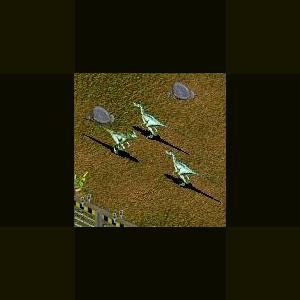About This File
This 3.4 metre (11 ft) long dinosaur lived during the early Cretaceous Period (Aptian - Albian stages, 121 to 98.9 million years ago). Fossils of the only named species (D. antirrhopus) have been recovered from the U.S. states of Montana, Wyoming and Oklahoma, though teeth that may belong to Deinonychus have been found much farther east in Maryland.
(Terrible claw) refers to the unusually large, sickle-shaped talon on the second toe of each hind foot, which was probably held up off the ground while the dinosaur walked on the third and fourth toes. It was commonly thought that Deinonychus would kick with the sickle claw to slash at its prey but recent tests on reconstructions of similar Velociraptor talons suggest that the claw was used to stab, not slash. The species name antirrhopus means (counter balance), which refers to John Ostrom's idea about the function of the tail. As in other dromaeosaurids, the tail vertebrae have a series of ossified tendons and super - elongated bone processes. These features seemed to make the tail into a stiff counterbalance, but a fossil of the very closely related Velociraptor mongoliensis has an articulated tail skeleton that is curved laterally in a long S – shape. This suggests that, in life, the tail could swish to the sides with a high degree of flexibility In both the Cloverly and Antlers Formation, Deinonychus remains have been found closely associated with those of the ornithopod Tenontosaurus. Teeth discovered associated with Tenontosaurus specimens imply it was hunted or at least scavenged upon by Deinonychus.
Paleontologist John Ostrom's study of Deinonychus in the late 1960s revolutionized the way scientists thought about dinosaurs, igniting the debate on whether or not dinosaurs were warm-blooded. Before this, the popular conception of dinosaurs had been one of plodding, reptilian giants. Ostrom noted lightweight bones and raptorial claws on the feet, which revealed an active, agile predator.



Recommended Comments
There are no comments to display.
Create an account or sign in to comment
You need to be a member in order to leave a comment
Create an account
Sign up for a new account in our community. It's easy!
Register a new accountSign in
Already have an account? Sign in here.
Sign In Now